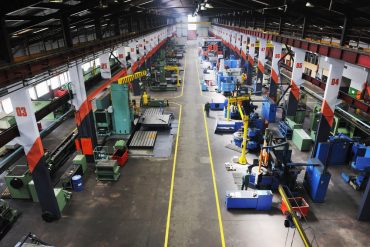
The Hyperledger Project, a proponent of blockchain, is branching out.
Recently, Hyperledger has announced the addition of eight new members to its cross-industry effort to create business-ready blockchain technology. The new additions bring the Hyperledger Project to 142 members, including 17 premium ones—a far cry from the initial 30 that existed at the beginning of 2016.
The project is clearly living up to its efforts of being cross-industry. New members range from financial services companies, asset managers, legal contracting, health care, professional services, and more, and include Alphapoint, Change Healthcare, CITIC, Clause, Inc, Deloitte, Ernst & Young LLP, FZG360 Network Co. Ltd, and Schroder Investment Management Limited.
The Hyperledger Project is hosted by The Linux Foundation, and a number of its frameworks are available for download and examination via Github. The end goal is to create a single blockchain solution that can work within any number of discrete industries to handle a huge variety of business transactions in ways that will add efficiency and improve trust.
Existing members also cover IoT, supply chain, and manufacturing. Notable premier members include some of the world’s biggest companies, such as Intel, American Express, Airbus, Hitachi, and Accenture.
Aaron Symanski, the CTO at Change Healthcare, which is the only new member to be introduced at premium status, said it is “crucial that healthcare leaders step up to champion innovation to help take blockchain from its early implementations to tomorrow’s healthcare IT solutions.”
Hyperledger is now responsible for eight different open source projects, three of which were announced within only the last few months. These include Hyperledger Burrow, a permissionable smart contract machine; Hyperledger Indy, which attempts to offer tools, libraries, and reusable components for creating digital identities in blockchains; and Hyperledger Composer, a collaboration tool for building blockchain business networks. A few others, like Hyperledger Fabric, Hyperledger Iroha, and Hyperledger Sawtooth, have moved from an “incubation” to “active” status within the last two months.
The barriers to blockchain
In his keynote at the recent CoinDesk Consensus conference, devoted entirely to blockchain innovation, Arvind Krishna argued in his keynote that an estimated $300 billion in the costs of global commerce could be optimized via blockchain, particularly when it comes to supply chains, property, and capital markets. This would primarily be in reducing the existing “friction in transaction systems.”
Krishna, the senior vice president of Hybrid Cloud at IBM Research, identified the major issue in implementing blockchain at an enterprise level: unlike the completely-public Bitcoin network, most businesess need more technology and control over permission and identity. A business blockchain network can’t have anonymous parties writing into the ledger, and the entire implementation needs to be secure, confidential, auditable, reliable, and scalable with growth.
Krishna argues that only open source blockchain networks, which offer a unique mix of transparency and support, can overcome these roadblocks. But that’s no easy task. According to many, there simply is no good enterprise-level blockchain implementation that satisfies typical business needs, which are dramatically different compared to a public ledger.
Krishna pointed to Hyperledger as one of the few viable options for enterprises wanting to try out blockchain, as it hit the right balance between strength and technical stability. On top of that, it allows for partitioned execution, transaction history, methods of increasing confidentiality, and permissioned membership—many of the critical features that enterprises are looking for with their implementations.
IBM, the company Krishna works for, is already a strong supporter of Hyperledger—the Bluemix technology platform is built on top of the Hyperledger technology, and IBM has been a supporter of the platform since its early phases.
But, Krishna argues that the details of the technology itself aren’t as important as how easy it is to implement outside of the enterprise. If blockchain becomes accessible to even the smallest parts of the supply chain, that will rapidly accelerate adoption and bring more benefits at a faster pace.
Now armed with 142 members, plus the recent hires of a Community Architect, Security Maven, and Director of Ecosystem Development, Hyperledger seems poised to make big moves through the remainder of 2017.





























